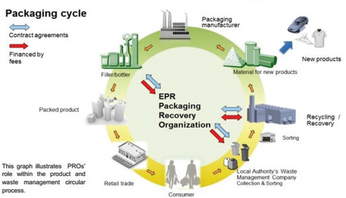Various Approaches for High-Barrier Film Development
Presented by Dr. Klaus Noller
The barrier films used for the encapsulation of flexible organic electronic devices such as organic photovoltaics (OPVs), electro-chromic devices, or organic light-emitting diodes (OLEDs) need to have very low gas and water vapor transmission rates. In addition to the organic electronic devices, another application area for such high barrier films is the vacuum insulation panels (VIPs). The barrier performance requirements for these products depend on the type of the final application, and can vary, for water vapor transmission rate (WVTR) as an example, from 10-3 g/(m2∙d) to 10-6 g/(m2∙d). The challenges faced during a high barrier film development are: • Low-cost production at large-scale, • Weatherability, e.g. UV, temperature and humidity stability for outdoor applications, • Compatibility to the final end-product, incorporation of additional functionalities, e.g. Electrical conductivity, • Mechanical stability, e.g. Strong adhesion between the barrier layers, • Performance characterization, i.e. Interpretation of measurement results by barrier film producers and end-users.
There are various approaches for the production of high barrier films at low-cost and large-scale. One way is the deposition of inorganic barrier and organic layers in an alternating-way on top of a polymeric substrate. The inorganic barrier layers are applied by means of thermal evaporation, electron-beam, or sputtering processes in vacuum. The organic layers are applied by means of reverse gravure coating processes at atmospheric conditions. Recently, a WVTR of 2 x 10-5 g/(m2∙d) has been reached by a multi-layered structure consisting of inorganic barrier layers deposited by sputtering process at a thickness of 25 nm in combination with hybrid polymeric layers (ORMOCER®s). These very thin inorganic barrier layers and their combination with hybrid polymeric layer coatings at atmospheric conditions can reduce the production costs significantly. Similarly, the combination of inorganic barrier layers deposited by e-beam process with ORMOCER® layers can lead to a WVTR of 5 x 10-4 g/(m2∙d) at production costs of less than about 10 €/m2.
In the last few years, a novel development, the so-called spatial Atomic Layer Deposition (ALD), has attracted very much attention. In contrast to the conventional (batch) ALD technique where the object to be coated is arranged in a reactor into which the precursor pulses are injected separated in time; the spatial ALD makes use of discrete precursor zones which move over the substrate surface. As a consequence the substrate surface is subjected to the alternating precursors as in the conventional ALD process and similar coating cycles can be achieved. By oscillating the coating head or the substrate forth and back the desired number of cycles can be achieved. This principle can be transferred to a cylindrical reactor system where a coating head is rotating instead of oscillating. Such systems have been developed and they are particularly suitable for roll-to-roll (R2R) coating of flexible polymer films and can be much faster than the conventional batch processes. A R2R coating-line based on this concept is currently being installed at Fraunhofer IVV facilities, which will enable the production of multilayered high-barrier structures all in atmosphere at significantly low costs.
This post is for paying members only
SubscribeAlready have an account? Log in

